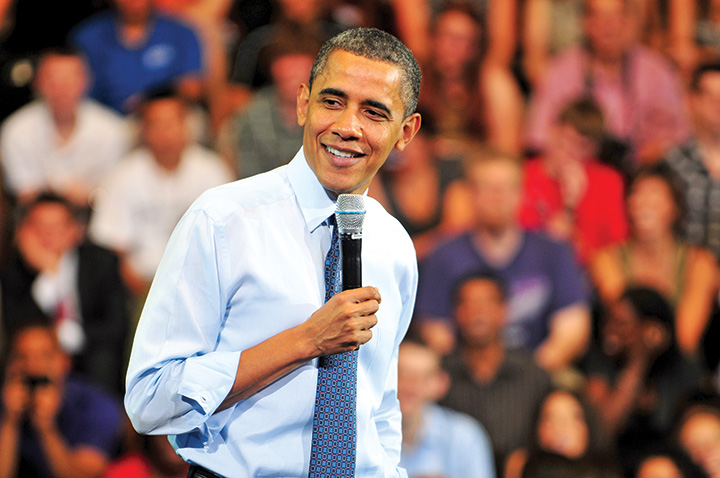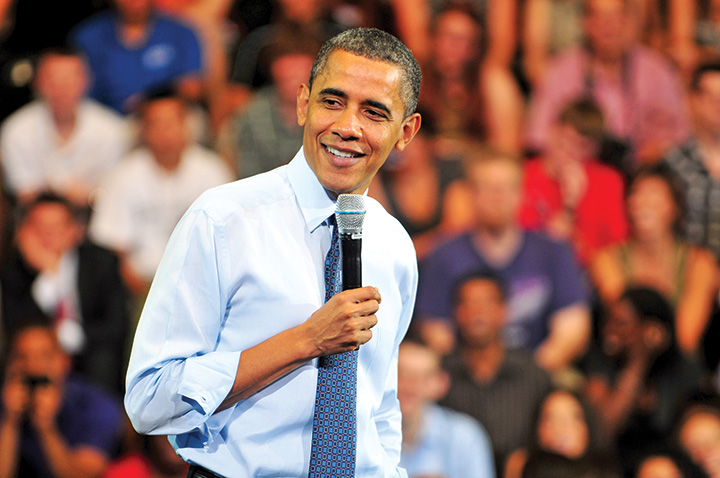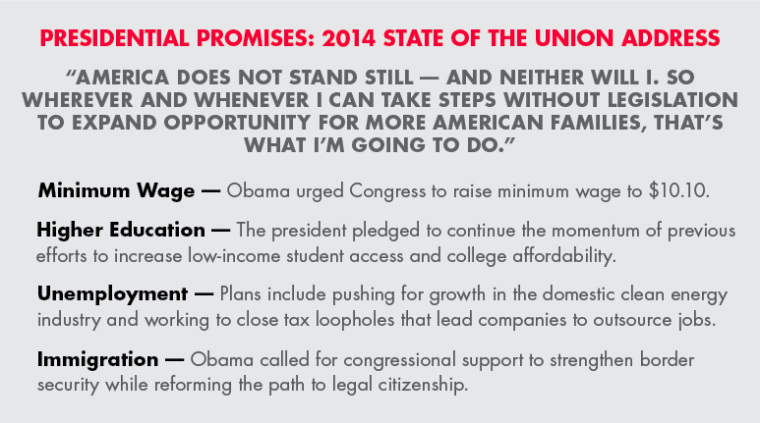A recurring theme in President Obama’s State of the Union address last night was “opportunity,” and he gave several nods to higher education in framing that message.
Obama opened his speech with a story about a teacher spending extra time “to lift America’s graduation rate to its highest levels in more than three decades,” alluding to his long-standing goal to increase the number of college graduates to about 60 percent by 2020 and setting the tone for a speech that touted his record on college affordability.
Marketing professor Hank Boyd said Obama’s message for graduates involves shoring up the job outlook.
“If you play by the rules and you go on to school and now you’re ready to get out into this job market, let’s have some opportunity,” Boyd said. “If we can get more jobs out there … then everybody wins.”
This record includes a rapid growth in Pell grants, a federal program aimed at helping low-income students enroll in higher education, with the number of Pell grant recipients increasing from 6.2 million in 2008-09 to 9.4 million in 2011-12, according to the most recent data from the U.S. Department of Education. Additionally, Obama increased the maximum Pell grant award to $5,550 from the $4,731 limit that stood before he entered office.
Also under his watch, the federal government absorbed more than 90 percent of the market share for student loans as the private lender field shrank.
“We worked with lenders to reform student loans, and today, more young people are earning college degrees than ever before,” Obama said in his speech. However, the continuing rise in college tuition largely has reduced the pricing power of the Pell grant, with it covering less than one-third the cost of college, according to the Institute for College Access and Success. In the 1980s, the maximum Pell grants covered about half the cost of tuition at public four-year colleges.
Also, changes to the program in 2012 lowered the maximum number of semesters Pell grant applicants could apply for the program from 18 to 12, and lowered the income level at which families can claim the maximum grant award from $32,000 to $23,000, highlighting the ever-present barriers to college affordability.
“Too many young people entering the workforce today will see the American dream as an empty promise — unless we also do more to make sure our economy honors the dignity of work, and hard work pays off for every single American,” Obama said.
Obama also made sure to mention an issue that has been perpetually stalling in Congress: the “broken immigration system.”
“When people come here to fulfill their dreams — to study, invent, contribute to our culture — they make our country a more attractive place for businesses to locate and create jobs for everybody,” Obama said. “So let’s get immigration reform done this year.”
An integral part of Obama’s immigration agenda includes a path to citizenship, known as the DREAM Act, for undocumented students who came to the country at a young age, if they meet certain requirements. While this state passed a bill in 2011 — upheld by referendum in the 2012 election — that would extend in-state tuition rates to these students, action at the federal level has been slow. In 2010, the measure passed in the House, then controlled by the Democrats, but the Senate couldn’t secure a supermajority to override a filibuster, killing the Obama-endorsed immigration bill.
Obama also pushed for an increase in minimum wage. Working off last year’s pledge to increase the national wage floor from $7.25 an hour to $9, he upped the ante this year by supporting a joint bill, sponsored by Sen. Tom Harkin (D-Iowa) and Rep. George Miller (D-Calif.), to raise the minimum wage to $10.10 an hour and by signing an executive order earlier in the day for higher federal service contractor wages. He called on Congress to “give America a raise,” in his speech.
“The message he’s trying to send is to say, ‘Look, Congress, you need to start acting. Less gridlock, let’s make things happen,’” Boyd said.
This year will also mark the end of America’s combat mission in Afghanistan, a war that began in 2001 under former President George W. Bush in response to the 9/11 attacks. What began as an effort oust the Taliban regime, which provided a safe haven for the al Qaeda extremists who planned the attacks, morphed into a full-on counterinsurgency campaign under Obama, with a subsequent expansion of drone operations in the tribal regions of Pakistan where the Taliban and other extremists took refuge after the initial invasion.
The winding-down of the combat mission will be the second of U.S.’s military commitments overseas that Obama will see come to an end, after the 2011 drawdown of combat troops in Iraq.
“Together with our allies, we will complete our mission there by the end of this year, and America’s longest war will finally be over,” Obama said.





